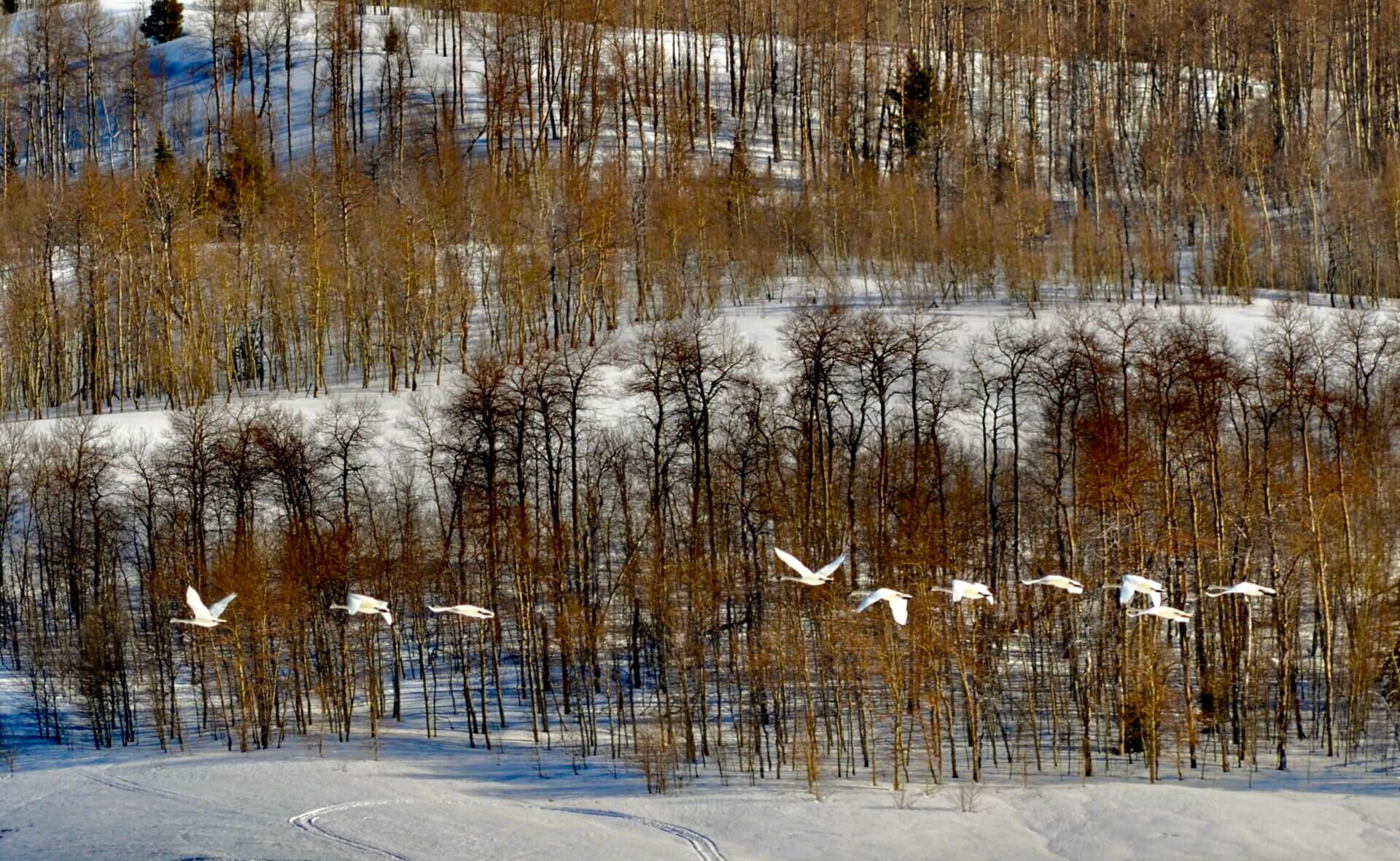
Hidden Migrations
The signs of spring are here. Snow is retreating from the valleys, cottonwoods and willows are budding, and you may have heard the soft melodies of birdsong brighten your backyard. But some signs of spring are less obvious than the iridescent flash of the mountain bluebird, or the jurassic bugle of the sandhill crane carried on crisp morning air. Under the cover of darkness, an epic migration is unfolding. While most of us are asleep, millions of migratory birds are flying overhead, heading north towards their summer nesting grounds.
Many migratory birds fly at night, and while new findings on how these birds navigate are still emerging, nocturnal migrants likely use the stars and moon for navigation. Flying at night also allows birds to take advantage of more stable nighttime air without daytime thermals, reduces the chance of overheating by flying in cooler nighttime temperatures, and avoids exposure to predators in the light of day. You may have heard these nocturnal flight calls, short buzzes, chirps, and whistles, as birds fly overhead. Recordings of these calls can be used to identify the species of birds, which in Wyoming could include everything from ducks and shorebirds to songbirds like warblers and sparrows.
In addition to listening for birds, scientists are also watching them–with weather radar. Next Generation Weather Radar (NEXRAD), best known for tracking storms, can also detect biological movement in the atmosphere. With the help of specialized algorithms, scientists can distinguish birds from rain, snow, and even bats or insects. This allows for real-time tracking of bird migrations at a continental scale. The BirdCast project, in partnership with the Cornell Lab of Ornithology and other collaborators, uses this radar data to provide nightly migration forecasts and live maps. You can visit https://birdcast.info to see forecasts for your area or sign up for alerts when big migrations are expected near you.
Understanding these migrations, and the challenges birds face along the way, is critical to protecting these amazing animals. We can use this information to conserve important habitats, not only on summer nesting grounds, but also at stopover habitats that provide critical rest and refueling during these long migrations. And we can all play a role. Simple actions, like turning off unnecessary outdoor lights during spring and fall migration can reduce disorientation and collisions. Keeping our feline friends inside, especially for sensitive times like migration and nesting, reduces the risks birds face while on the ground.
Peak migration in Wyoming typically occurs around the second week of May. While these migrants typically fly too high to readily hear their calls by ear, spring and fall nights with low cloud cover or light precipitation can push their cruising altitude down to within earshot. While you marvel at our beautiful Wyoming night skies this spring, remember to also marvel at this hidden migration above.